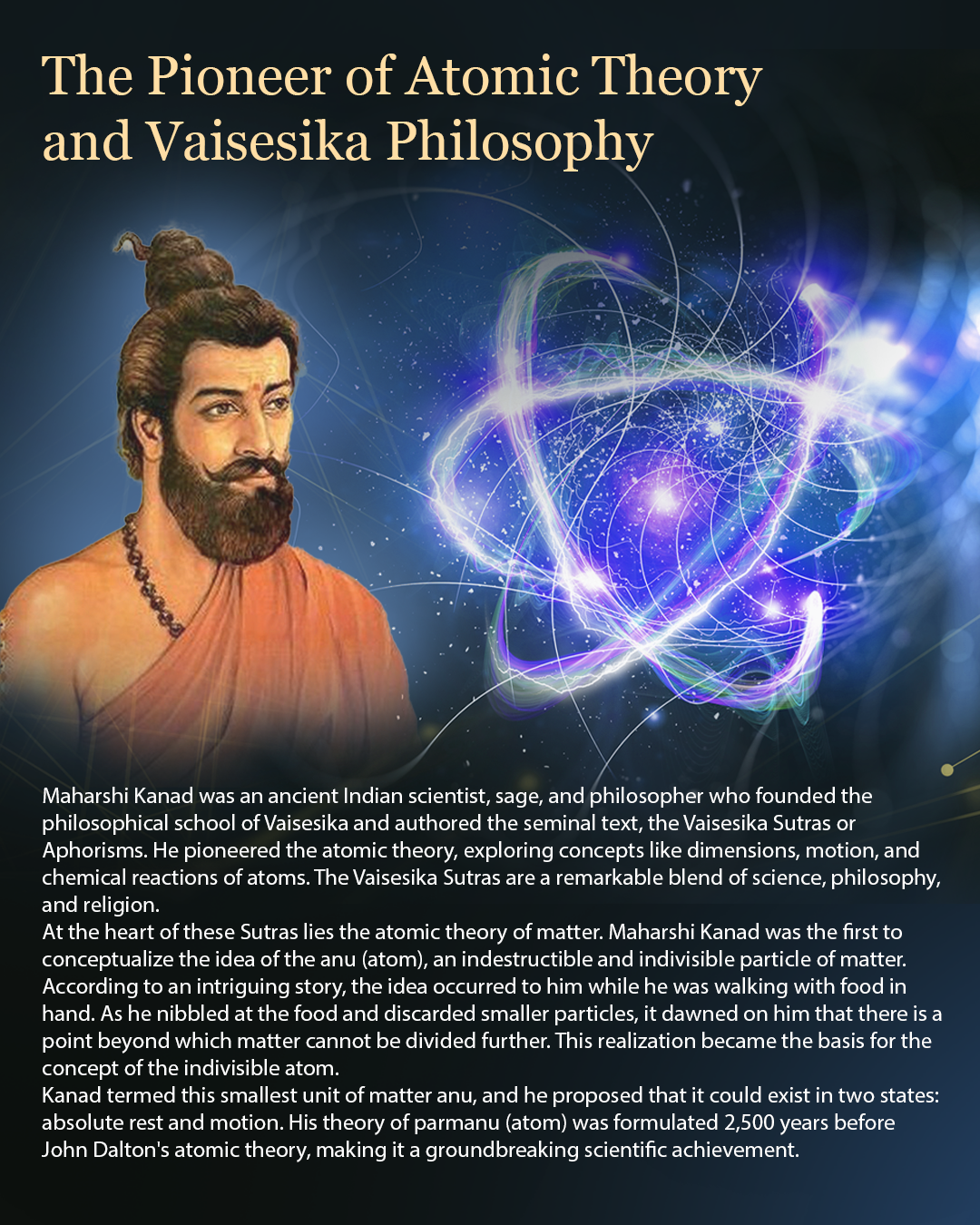Principles of Vaisheshika Philosophy
Vaisheshika Philosophy
1. Introduction
- Vaisheshika is traditionally paired with Nyaya.
- Attributed to Kanada Rishi (along with Panini).
- Kanada Vaisheshika Sutras authored by Kanada.
- Prasastapada provided commentary on these sutras (5th Century).
- Merged with Nyaya around the end of the first millennium, resulting in "Nyaya Vaisheshika".
- "Vaisheshika" derives from "Vishesha," meaning difference or unique attribute.
2. Key Idea: Diversity and Classification
- Multiple distinct entities in the world, even among similar items.
- Recognizes diversity and aims to classify it easily.
- "Vishesha": Peculiarity that makes an entity distinct.
- Diversity is fundamental to the world (opposing Advaita Vedanta).
- Agrees with Nyaya: Uncontradicted experience should be real.
3. Challenge of Giving a Theory
- Difficult to give an explanation for every single entity.
- Solution: Classify entities into categories for a comprehensive theory.
- Explaining the nature of the category explains the nature of each entity in the category.
- Strategy: Subsume entities into baskets with general definitions.
4. Categories (Padartha)
- Knowledge of categories is important for liberation.
- 7 categories:
- 6 bhava padarthas (existent categories)
- Dravya (Substance)
- Guna (Quality or Attribute)
- Karma (Action)
- Samanya (Generality or Universal)
- Vishesha (Particularity)
- Samavaya (Inherence)
- 1 abhava padartha (non-existent category)
- Abhava (Absence/Negation)
- 6 bhava padarthas (existent categories)
- Categories used to describe phenomena in the world.
- Example: Analyzing the sentence "No brown cow walks here" through these categories.
5. Explanation of Categories
-
Dravya (Substance)
- Examples: 'Cow', 'here' (spatial location). Space is considered a substance.
- Entities are put into this category
-
Guna (Attribute/Quality)
- Examples: 'Brown' (color), Hard, Soft, Contact etcetera
- A single theory for the category covers all attributes
- Karma (Action) * Examples: 'Walks' – any kind of action. * Single theory for the category covers all actions
- Samanya (Generality/Universal) * How we identify things as a type. Shared common features. * Examples: cow has "cow-ness", humans have humanness
- Vishesha (Particularity) * Each entity is also unique/ different * Examples: every person is a different human being.
- Samavaya (Inherence) * Glue/relation that holds attributes to a substance. * Not separable * Example: color is inherent in an object
- Abhava (Absence/Negation) * The negation / the absence of something. * Example: “No”
6. Application of Categories (Padartha)
- Each word of the language corresponds to an object (padartha).
7. Theory of Paramanu
- Real proponents of Paramanu theory. (Nayakas also accept).
- Paramanu (atoms) are indivisible, smallest particles, and distinct from each other.
- Each paramanu has a vishesha (distinction).
- Differs from the modern notion of atoms (gold atom = another gold atom).
- Paramanu forms the material cause of the world.
- Examples: paramanus of earth, water, fire, and wind.
- Paramanu is known via inference, not direct perception.
8. Composite Entities
- Entities are composite and made of parts.
- Parts can be separated into smaller parts.
- Logical conclusion: End up with partless entities called "Paramanu."
9. Conclusion
- Vaisheshika & Jaina also had their own versions of Paramanu.
- Agrees with Nyaya on ideas of liberation and roles of Ishvara.
- Correct understanding of pramana and prameya leads to liberation.


No Comments